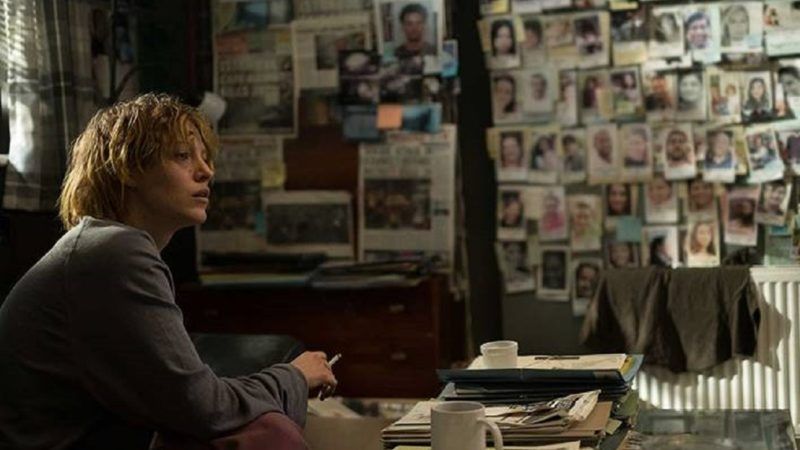Review: The Rhythm Section
Blake Lively and Jude Law overqualified for an unexciting spy flick.

There are a couple of good things about The Rhythm Section. First, the director, Reed Morano, has spent much of her career as a cinematographer and camera operator, so the action scenes here, of which there are many, really pop. Most notably, she's found something new to do with the traditional car chase. In one such sequence, Morano shows us a lot of the four-wheel street pandemonium from inside the chased car (through the rear window, through a side window, etc.). This creates a sense of claustrophobic panic that's especially distressing.
The movie also benefits from the presence of the matchless Blake Lively, seriously scruffing down to play Stephanie Patrick, a onetime Oxford student (supposedly English, but with a decidedly transatlantic accent), whose life has been derailed by the death of her parents and siblings, all of whom were killed in a plane crash. This event left Stephanie so distraught that she switched majors and now works as a prostitute in a grubby London bordello, her arms pricked with track marks and her eyes dark pools of despair.
Fortunately, Jude Law, playing a disgraced MI6 agent named Boyd (or just "B" will do), is on hand to help. Stephanie tracks this character down to his remote digs in rural Scotland after being approached in London by an investigative journalist named Proctor (Raza Jaffrey), who claims to have proof that the plane on which Stephanie's family perished was actually blown out of the sky by a terrorist bomb. Not only that, but the bomber is still at large, and so is the evil scumbag controlling him, and both are being protected by a cabal of shadowy intelligence poohbahs. (Presumably, the same people who've come up with the rather silly scumbag pseudonym of U-17.)
Through precociously sneaky means, Stephanie learns that Proctor's source for this story is B, and when she finally sneaks up on him in Scotland…well, let's say she fails to catch him unawares. Law is quietly charismatic as always playing an omnicompetent man of several lethal talents; and as he begins training Stephanie for her self-assigned mission to terminate her family's killers, we can feel the movie settling easily into the tradition of such films as La Femme Nikita, Hanna, Anna and any number of other pictures in which young women are transformed by skillful men into remorseless assassins.
The Rhythm Section suffers from comparison to those earlier films, however. It starts out strong, as you'd expect of a movie produced by Barbara Broccoli and Michael G. Wilson, longtime tenders of the James Bond franchise; but it steadily loses interest on its way to a piddling conclusion. (The picture is based on the first of several linked novels by Mark Burnell, but by the end, any desire anyone might have had to see the story continued in a sequel will likely have guttered out.) Even the arrival of Sterling K. Brown, who brings a solid romantic presence to the role of a Madrid-based "information broker" named Serra, can't kick the picture fully into gear. By the time he appears, the story has become cluttered with tedious complications, and the central relationship between Stephanie and B has begun to fade for lack of any emotional component.
These flaws unfortunately free a viewer's attention to wander, and to wonder, perhaps, how Stephanie is able to survive a close-up barrage of gunfire that blasts out the driver's-side window of the car she is, in fact, driving. Also, what's with the music cues? If there's a drug interlude in the story, must it be accompanied by the Velvet Underground's "I'm Waiting for the Man"? And who decided the movie should end with a lumbering electro rendition (by Sleigh Bells) of "Where Did You Sleep Last Night," which has no connection to the story whatsoever? Where are the soundtrack assassins when you need them?


Show Comments (7)